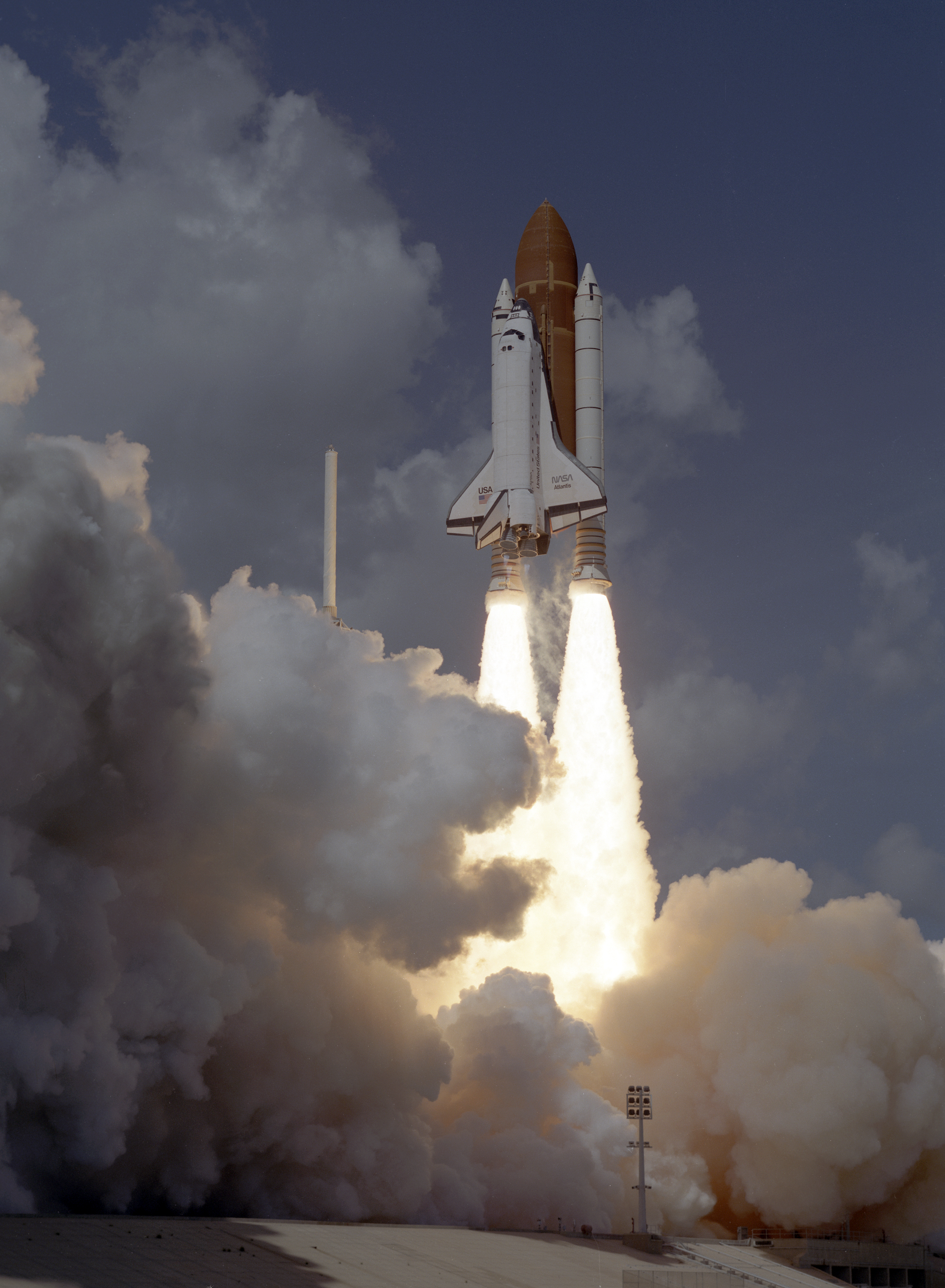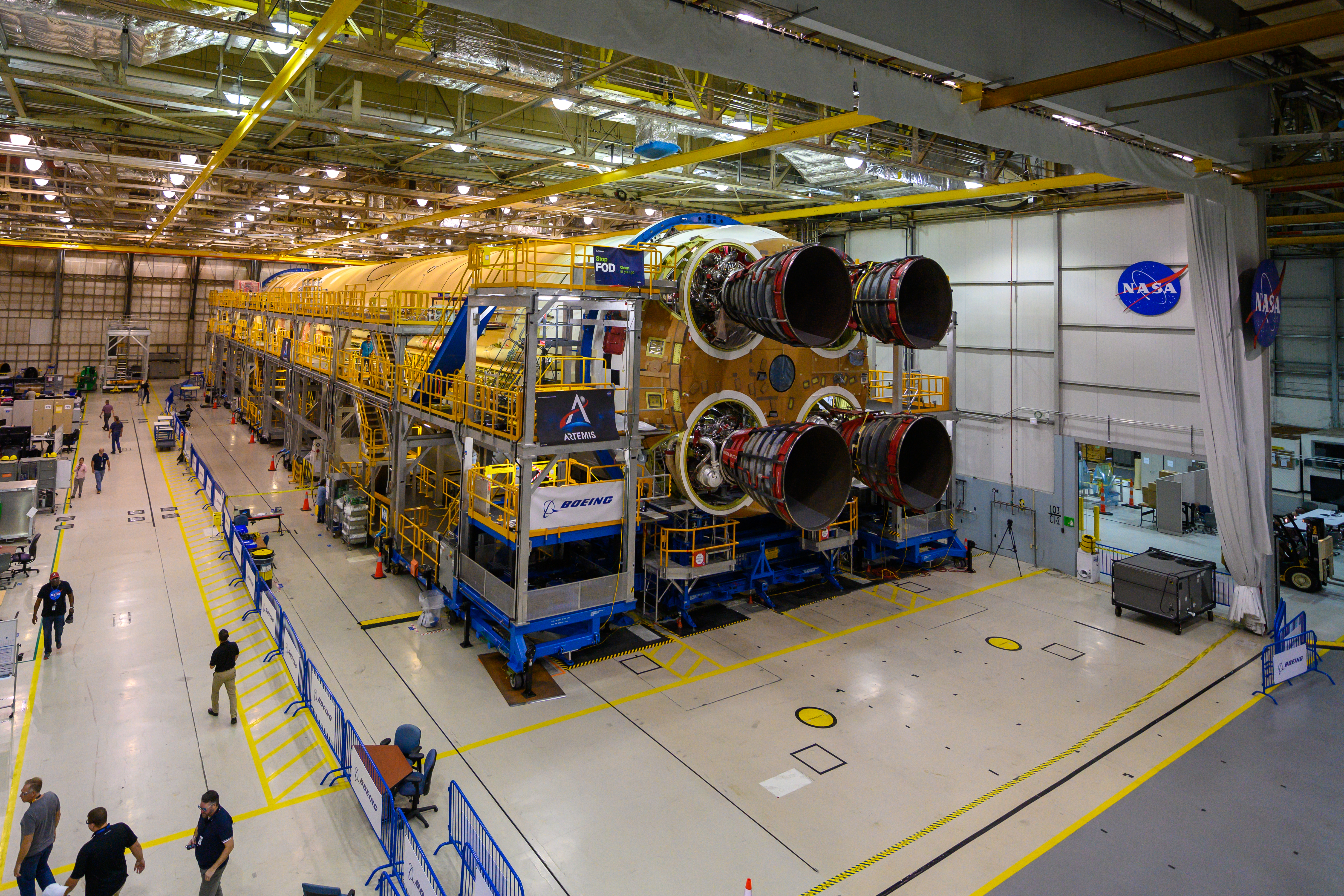SLS Monthly Highlights : July 2019 (pdf)

Summary
LOX tank readied for testing
The fourth and final structural test article for the SLS core stage was unloaded from NASA’s barge Pegasus at Marshall Space Flight Center July 9. The nearly 70-foot-long liquid oxygen (LOX) tank structural test article, which was manufactured at NASA’s Michoud Assembly Facility in New Orleans, is structurally identical to the flight version and will be tested at Marshall. The LOX tank is one of two tanks in the rocket’s core stage that will supply propellant to the four RS-25 engines, which will produce more than 2 million pounds of thrust to help launch Artemis 1, the first flight of NASA’s Orion spacecraft and SLS, to the Moon. Marshall has tested major components of the core stage, upper stage and payload structures for SLS to confirm they will be able to withstand the forces and conditions they will ultimately face during launch and flight. To date, Marshall test engineers have completed testing on the entire upper part of the rocket, which includes the interim cryogenic propulsion stage that will give Orion the final boost to the Moon, and two of the four core stage pieces being tested: the engine section that connects to the four RS-25 engines and the intertank, the piece of the core stage that feels the most force during launch and solid rocket booster separation.
Green Run : test like you fly
Before the SLS rocket launches the Orion spacecraft during the Artemis 1 mission, the rocket’s core stage will be tested on Earth. NASA will test the rocket’s 212-foot tall core stage — the tallest rocket stage the agency has ever built — with a “Green Run” test to help ensure mission success and pave the way for future Artemis missions carrying crew to the Moon. Missions at the Moon will be a stepping stone to prepare for human exploration of Mars.During Green Run testing, engineers will install the core stage in the B-2 Test Stand at NASA’s Stennis Space Center near Bay St. Louis, Mississippi, for a series of tests that will build like a crescendo over several months. The term “Green Run” refers to new flight hardware tested together for the first time. The stage will be fueled and pressurized, and the test series culminates with firing up all four RS-25 engines to demonstrate that the engines, tanks, fuel lines, valves, pressurization system and software can all perform together just as they will on launch day.
Artemis 1 : the launch sequence (YouTube)
Hear the countdown and see how NASA’s SLS, the world’s most powerful rocket, will send the Orion spacecraft to the Moon on the Artemis 1 Mission. This video takes you through the pre-launch sequence at NASA’s Kennedy Space Center in Florida and through all the flight operations as SLS launches Orion and sends it on to lunar orbit.
SLS on the road : Lehman College, Bronx, NY

Kids color their vision for the SLS rocket during the City of Science at Lehman College in the Bronx, New York, July 27. The event is part of the World Science Festival, which hosts science celebration events around the world.
SLS Updates on Twitter
SLS Updates on Facebook

Summary
LOX tank readied for testing
The fourth and final structural test article for the SLS core stage was unloaded from NASA’s barge Pegasus at Marshall Space Flight Center July 9. The nearly 70-foot-long liquid oxygen (LOX) tank structural test article, which was manufactured at NASA’s Michoud Assembly Facility in New Orleans, is structurally identical to the flight version and will be tested at Marshall. The LOX tank is one of two tanks in the rocket’s core stage that will supply propellant to the four RS-25 engines, which will produce more than 2 million pounds of thrust to help launch Artemis 1, the first flight of NASA’s Orion spacecraft and SLS, to the Moon. Marshall has tested major components of the core stage, upper stage and payload structures for SLS to confirm they will be able to withstand the forces and conditions they will ultimately face during launch and flight. To date, Marshall test engineers have completed testing on the entire upper part of the rocket, which includes the interim cryogenic propulsion stage that will give Orion the final boost to the Moon, and two of the four core stage pieces being tested: the engine section that connects to the four RS-25 engines and the intertank, the piece of the core stage that feels the most force during launch and solid rocket booster separation.
Green Run : test like you fly
Before the SLS rocket launches the Orion spacecraft during the Artemis 1 mission, the rocket’s core stage will be tested on Earth. NASA will test the rocket’s 212-foot tall core stage — the tallest rocket stage the agency has ever built — with a “Green Run” test to help ensure mission success and pave the way for future Artemis missions carrying crew to the Moon. Missions at the Moon will be a stepping stone to prepare for human exploration of Mars.During Green Run testing, engineers will install the core stage in the B-2 Test Stand at NASA’s Stennis Space Center near Bay St. Louis, Mississippi, for a series of tests that will build like a crescendo over several months. The term “Green Run” refers to new flight hardware tested together for the first time. The stage will be fueled and pressurized, and the test series culminates with firing up all four RS-25 engines to demonstrate that the engines, tanks, fuel lines, valves, pressurization system and software can all perform together just as they will on launch day.
Artemis 1 : the launch sequence (YouTube)
Hear the countdown and see how NASA’s SLS, the world’s most powerful rocket, will send the Orion spacecraft to the Moon on the Artemis 1 Mission. This video takes you through the pre-launch sequence at NASA’s Kennedy Space Center in Florida and through all the flight operations as SLS launches Orion and sends it on to lunar orbit.
SLS on the road : Lehman College, Bronx, NY

Kids color their vision for the SLS rocket during the City of Science at Lehman College in the Bronx, New York, July 27. The event is part of the World Science Festival, which hosts science celebration events around the world.
SLS Updates on Twitter
SLS Updates on Facebook
Last edited:



